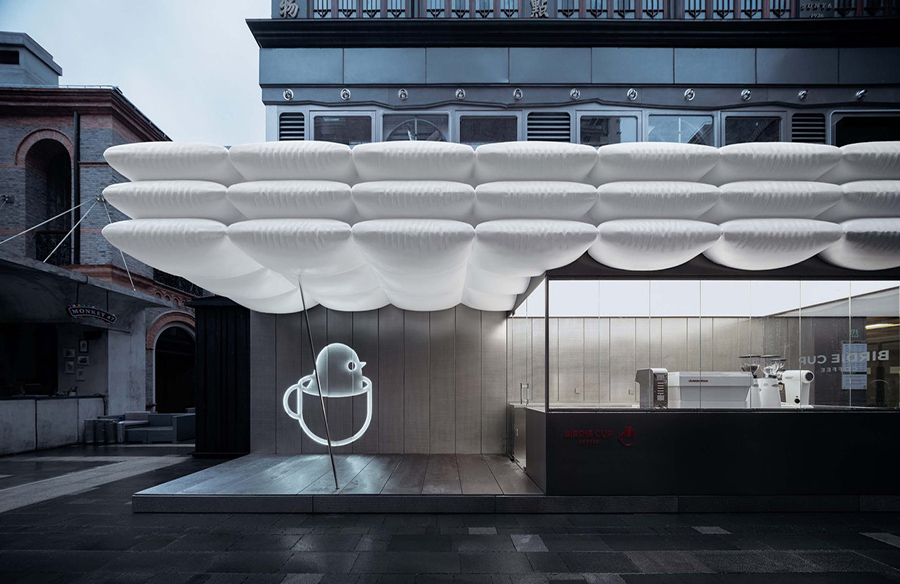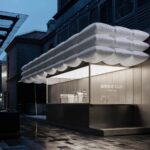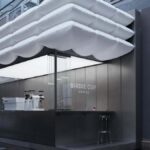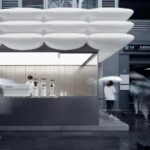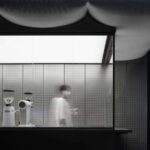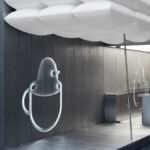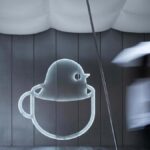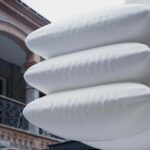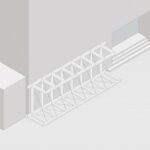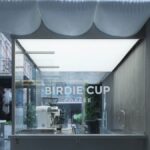Introduction
Nestled amidst the bustling streets of Fengshengli, West Nanjing Road, Shanghai, Birdie Cup Coffee emerges as a serene refuge within a sea of tightly packed Shikumen buildings and commercial establishments. Its strategic location next to the metro station ensures a constant stream of traffic and pedestrians, making it a prime spot for creating an “emotional landmark” amidst the chaos.
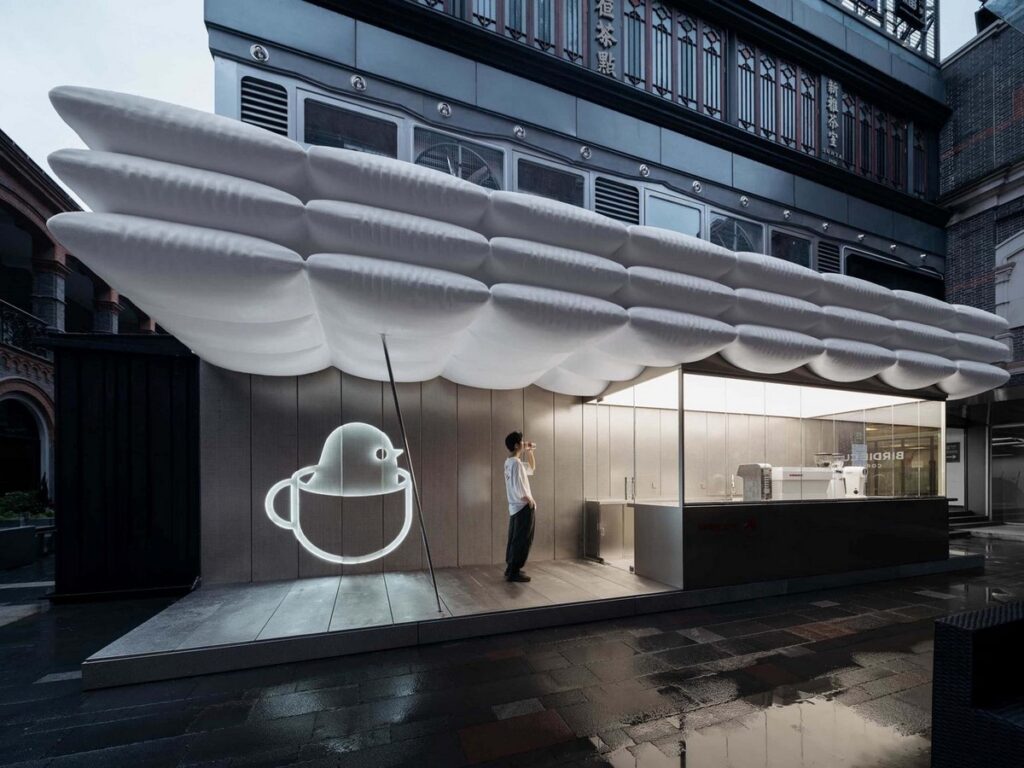
Design Philosophy
F.O.G. Architecture embarked on a mission to craft a space that transcends the ordinary, employing the concept of “de-architecture” to create an expansive and transparent environment characterized by white and grey hues. The incorporation of large glass panels and matte-finish metal elements softens the rigid urban landscape, striking a balance between austerity and warmth.
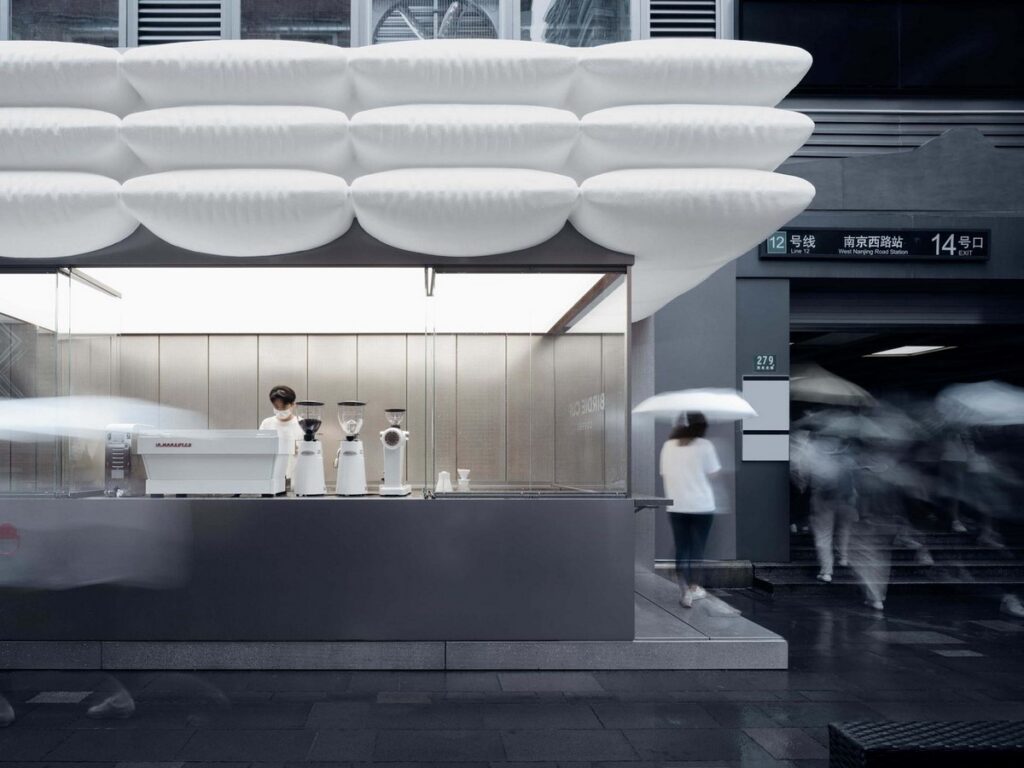
The Signature Roof
Central to the design ethos of Birdie Cup Coffee is the iconic roof, envisioned not merely as a structural component but as a symbol of the brand’s ethos. Resembling “white floating puffs,” the roof exudes a sense of lightness and playfulness, inviting patrons to escape the confines of the city and indulge in a moment of respite.
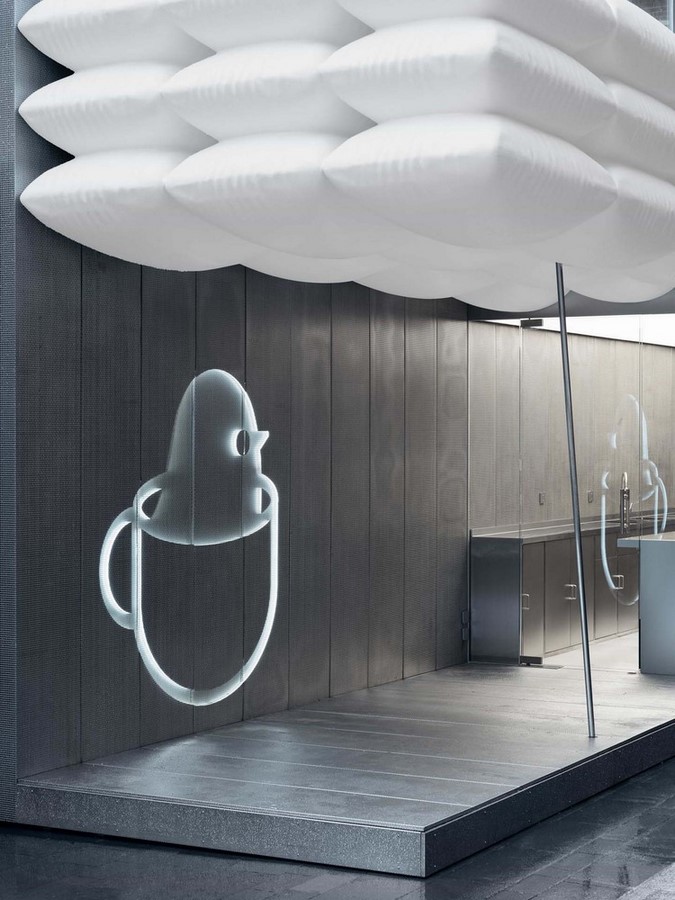
Evoking Imagination
Eschewing predefined imagery, the architects deliberately crafted the roof to evoke a myriad of associations – from clouds and pillows to spaceships. By allowing visitors to interpret the space through their own lens, Birdie Cup Coffee fosters a sense of creativity and exploration, mirroring the boundless possibilities of the digital age.
Engineering Marvels
In collaboration with engineering experts, F.O.G. Architecture employed innovative techniques to realize their vision, including a C-shaped structure that supports the entire roof with minimal intrusion. The result is a seamless integration of form and function, preserving the illusion of weightlessness and suspension.
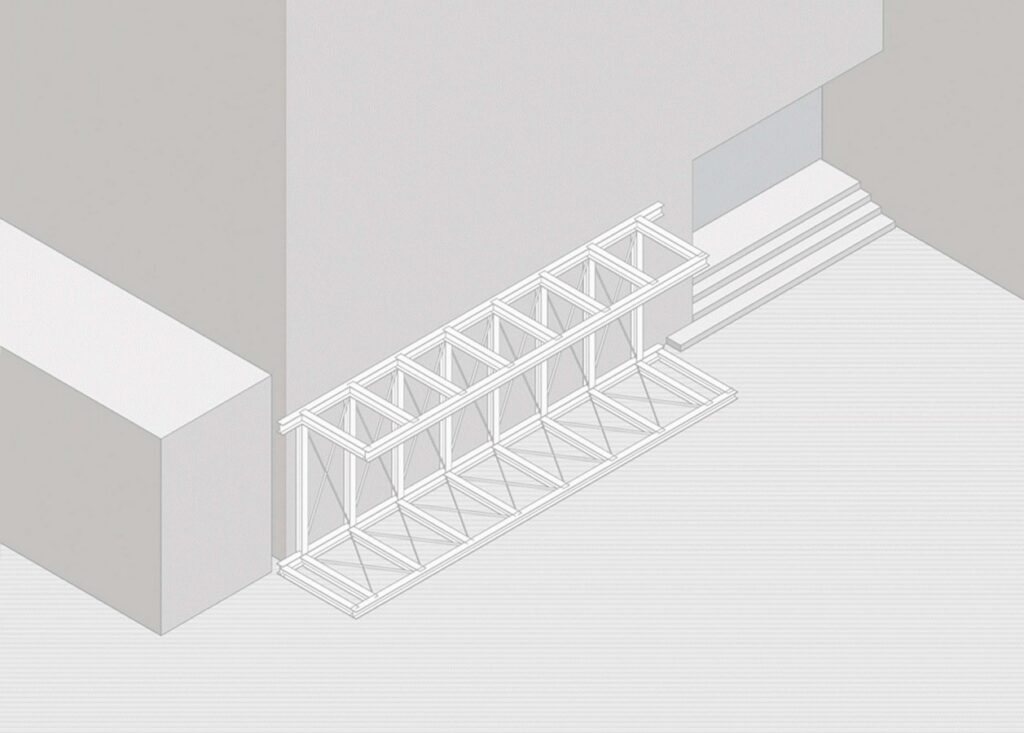
Coffee Culture
With a minimalist palette and strategically placed windows, Birdie Cup Coffee blurs the boundary between customers and baristas, fostering a sense of intimacy and camaraderie. The inclusion of an oblique thin pillar adds a dynamic element to the space, further enhancing its visual appeal and functionality.
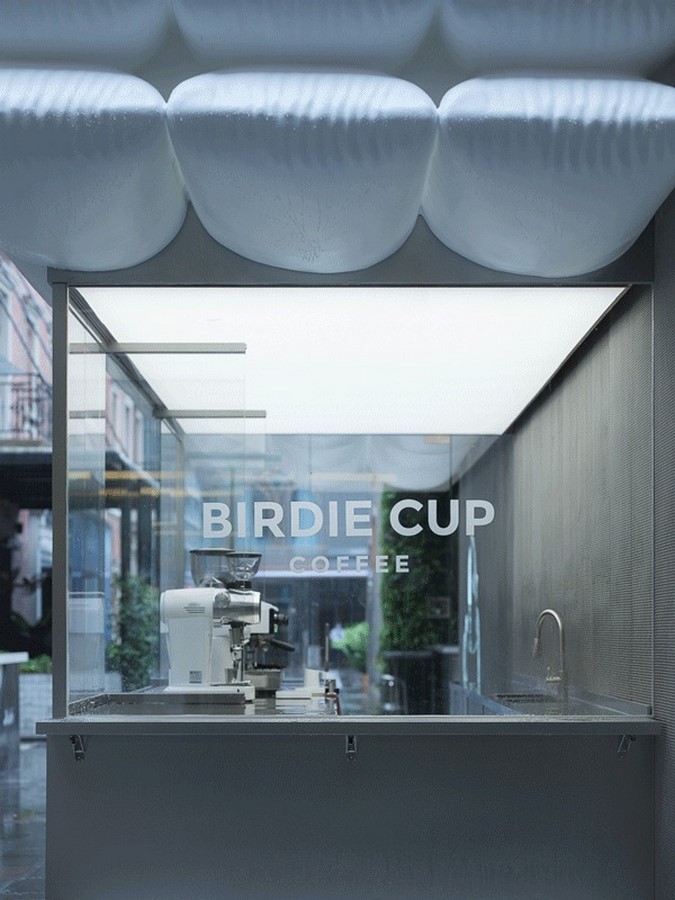
Conclusion
From its conceptualization to execution, Birdie Cup Coffee exemplifies a harmonious blend of functionality and creativity, offering patrons a sanctuary amidst the chaos of urban life. By stimulating the senses and encouraging introspection, this micro commercial architecture transcends its physical confines to become a catalyst for relaxation and inspiration.


